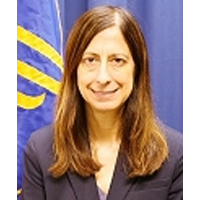Native Americans’ Access to Health Care Difficult to Measure
 Indian Health Service acting Director Mary Smith
Indian Health Service acting Director Mary Smith
By Felicia Fonseca, Associated Press
FLAGSTAFF, Ariz. — Access to health care for American Indians is difficult to gauge because the agency that oversees it does a poor job of tracking patient wait times, a report by a federal watchdog found.
Long wait times are a known problem at hospitals and health centers run by the Indian Health Service, particularly in rural areas where unemployment and poverty levels are high, the U.S. Government Accountability Office said Thursday. New patients waited up to four months to see a physician at a facility on the Navajo Nation and up to a month for a routine vision check at a clinic in the Billings, Montana, region, staff told federal investigators.
But until the Indian Health Service develops a way to monitor patient wait times across all its facilities, it won’t be able to tell whether it has improved health care for a population that suffers disproportionately from diseases such as diabetes and chronic liver disease, the report said.
The report highlights the challenges facing Indian Health Service, which has been under intense scrutiny lately over findings of woefully inadequate services at some of the facilities in the Great Plains region. Multiple congressional hearings have been held on the quality of care for tribal members who are guaranteed free health care as a condition of treaties that tribes signed with the United States, staffing shortages and growing patient wait times.
Sen. John Barrasso (R-Wyoming), chairman of the Senate Committee on Indian Affairs, said the lack of oversight at the health facilities is not surprising but tribal members deserve better.
“IHS continually fails to put the needs of patients first, and the findings in this report are just another example of that,” he said in a statement Thursday.
Long wait times also have plagued the Veterans Affairs Department. Investigations found that department employees falsified records to cover up the delays.
Governing boards in most of the Indian Health Service area offices review patient wait times only when tribal representatives or staff members raise concerns, patients complain or if the health facilities choose wait times as the focus of improving care, the report said.
Officials with the Indian Health Service say they struggle to provide timely care because of staffing shortages and outdated equipment. Some facilities have improved access to care with mobile clinics and home visits and made scheduling more flexible, the report said.
The Indian Health Service said it would consider incorporating data on patient wait times into a planned Office of Quality Management. Agency spokeswoman Britt Ehrhardt declined to comment further.
Sen. Jon Tester (D-Montana), the Indian Affairs Committee vice chairman, said he’ll continue to work with tribes and colleagues to address the wait times and hold the Indian Health Service leadership accountable. He said the dysfunction within the agency is linked directly to Washington, D.C.’s ignorance about Indian Country and what's needed to address longstanding issues.
“We have known for years that IHS is underfunded and understaffed, and these deficiencies have led to unacceptably long wait times in Indian Country and subpar health care,” he said.
To Learn More:
Indian Tribe Claims V.A. Withholds Lawful Reimbursements for Veterans Care (by Tim Hull, Courthouse News Service)
Racial Group most likely to be Killed by Police? Native Americans (by Steve Straehley, AllGov)
Native American Actors Walk off Set of Adam Sandler/Netflix Movie in Protest of Insulting Script (by Noel Brinkerhoff, AllGov)
- Top Stories
- Unusual News
- Where is the Money Going?
- Controversies
- U.S. and the World
- Appointments and Resignations
- Latest News
- Musk and Trump Fire Members of Congress
- Trump Calls for Violent Street Demonstrations Against Himself
- Trump Changes Name of Republican Party
- The 2024 Election By the Numbers
- Bashar al-Assad—The Fall of a Rabid AntiSemite





Comments
moreless